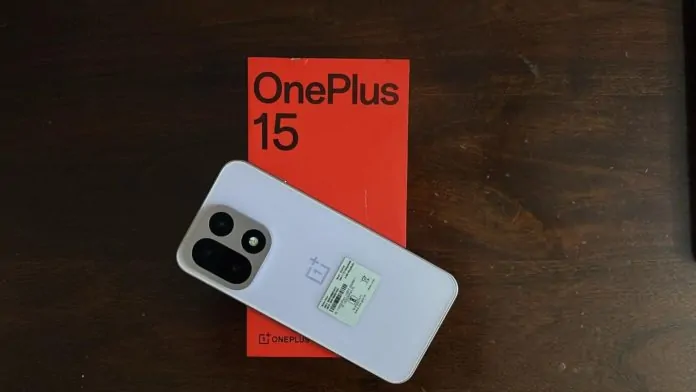Outside of China, it’s been less than a year since the OnePlus 13 was debuted, and it’s shown to be a formidable competitor this year. So much so that I’d call it the best-value Android flagship of 2025.
Although the 13 still has a lot of life in it, OnePlus is a company that “Never Settles,” hence the OnePlus 15 is already available.
Long-time OnePlus fans will understand the firm’s antipathy to the number 4, but the business is also framing the numerical jump between generations here as a representation of the technological advancements its new flagship represents.
The OnePlus 15 does, in fact, include a few world-firsts and unique features in both hardware and software. However, to determine whether the cumulative effect makes it a worthy purchase, I’ve spent the last few weeks trying and living with the phone to see what it’s all about.
Design & Build
- New design language
- IP66, IP68, IP69 and IP69K rated
- Supports magnetic accessory ecosystem with compatible case
As I noted in my ‘OnePlus 15 major upgrades’ post, I didn’t particularly like the design of the OnePlus 13. It was an unquestionably luxury smartphone with excellent fit, but OnePlus’ aesthetic choices for the phone’s geometry and surface treatments lacked cohesiveness. It was confusing and overcomplicated, fussy and uneven, particularly in its characteristic Ocean Blue color scheme.
That couldn’t be further from the truth for the OnePlus 15. The design language introduced with the OnePlus 13s has now been carried over to the company’s most recent flagship. This has flat sides, flat glass front and back, much more strongly rounded edges, and a newly redesigned rear camera enclosure.
A decidedly cleaner look, with an air of understated confidence
It’s a cleaner, more minimalist style with an aura of understated confidence, thanks in part to OnePlus’s choice of surface finishes, which may be the best available.
The use of LIPO (Low-Injection Pressure Over-molding) to house the display results in a narrower bezel than we’ve ever seen, measuring only 1.15mm thick all the way around the 15 (the previous two iterations of Apple’s iPhone Pro Max had 1.36mm bezels).
The eagle-eyed among you may notice that the 15 has a similar appearance to Oppo’s new Find X9 and Find X9 Pro, but unlike these phones, which are only available in a very dull silver or white in most markets, OnePlus’ new flagship comes in three eye-catching colors.
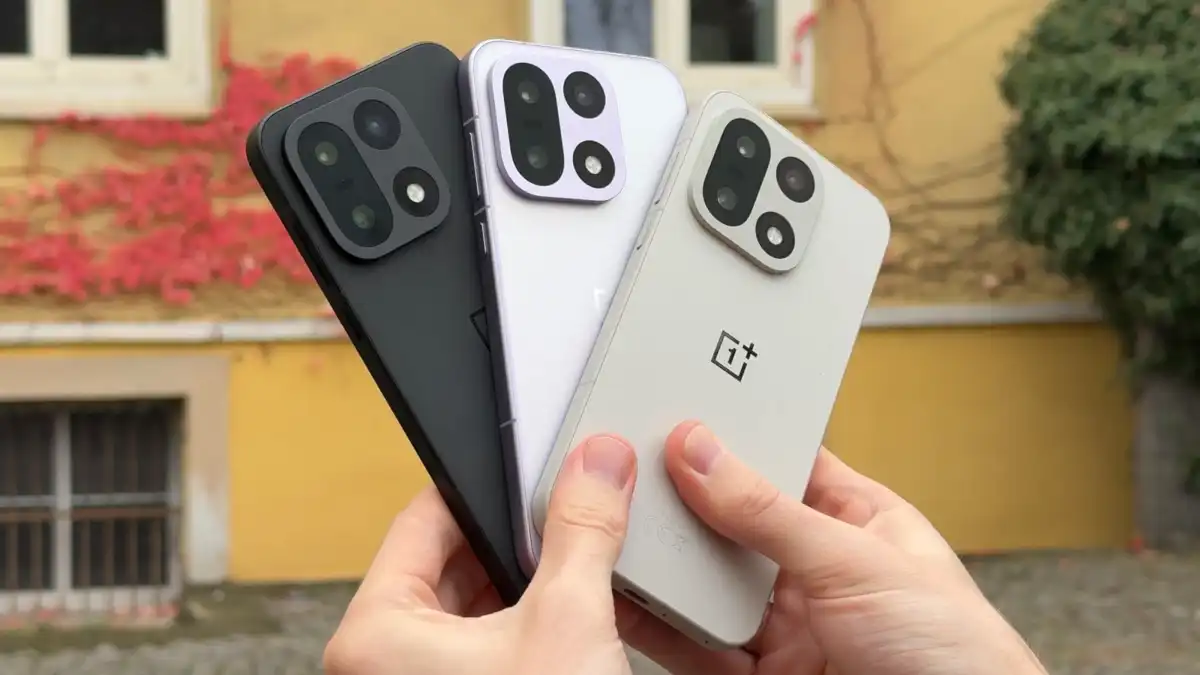
Ultra Violet is the most brilliant finish, with a lavender hue on the frame and back glass, the latter of which color-shifts in response to light thanks to an iridescent coating. Next, there’s Infinity Black, which OnePlus claims is the “darkest black ever on a phone,” with a super-matt surface and an etched AG glass back that distinguishes it from other all-black phones.
The most technically impressive and distinctive color in this year’s collection, however, is Sand Storm. Like Infinity Black, it has a super-matt finish on the back, frame, and camera surround, but to produce this warm grey tone, OnePlus is the first in the smartphone sector to use a process known as micro-arc oxidation (or MAO) over the exterior metalwork.
The end result is a material that OnePlus claims is 1.3 times tougher than titanium and 3.4 times tougher than aluminum. As a result, the metalwork is cooler to the touch, and in this colorway, the glass back is replaced with a fibreglass one.
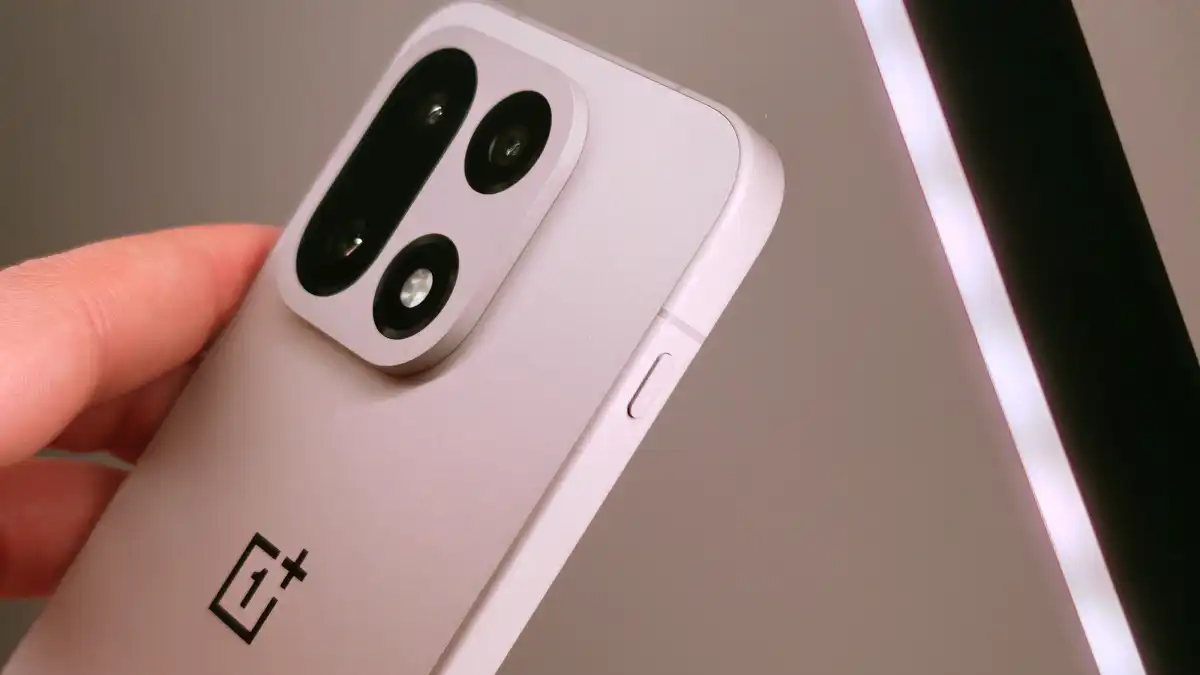
Despite OnePlus’ assurances, I was concerned about the durability of this new finish, but after three weeks of consistent use, it appears that MAO is also more resistant to nicks and bumps than I expected, and fingerprints don’t linger as much.
For a brand that previously avoided getting its phones IP-certified, the OnePlus 15 has been tested against more of the standard’s various categories than any other phone on the market, with IP66, IP68, IP69, and IP69K certification (the K indicates that it can withstand high-pressure, high-temperature water jets). Furthermore, it has been tested to endure full immersion in fresh water to a lower depth for up to 30 minutes (2 meters, compared to its predecessor).
If you’re still concerned about keeping your OnePlus 15 in pristine condition, OnePlus is also releasing a trio of cases and an anti-reflective glass screen protector alongside the phone. As with the OnePlus 13, the cases support magnetic MagSafe/Pixelsnap accessories.
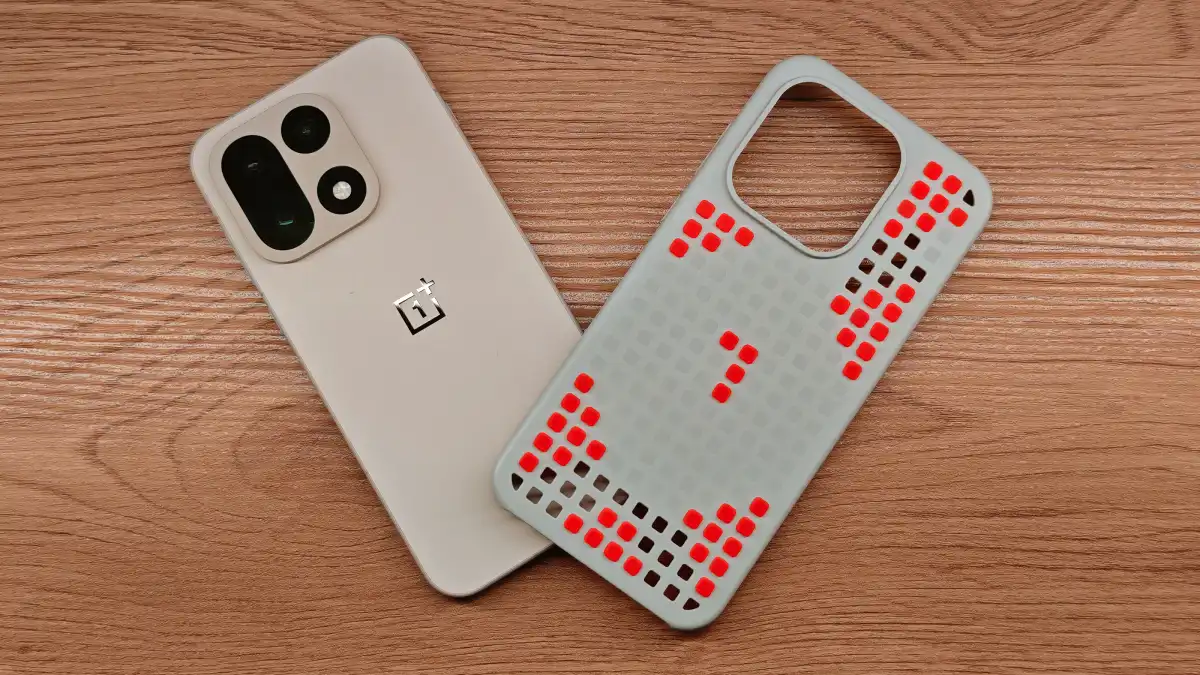
All I’d say is skip the Hole Pattern Magnetic Case (pictured) because, in person, it doesn’t match the official product imagery, and despite the included silicone pips for personalization, it just looks bad.
Screen & Speakers
- 6.78-inch 1.5K ProXDR LTPO OLED display
- 165Hz peak refresh rate and dedicated touch response chip
- New, more balanced stereo speaker layout
The OnePlus 15’s new, more rounded silhouette technically houses a smaller (6.78-inch, down from 6.82-inch) and lower resolution (pixel density of around 450ppi, versus 510ppi) panel than last year’s OnePlus 13, but make no mistake: this is still a large phone with a pleasingly sharp flagship-class screen.
The change isn’t OnePlus trying to cut corners on quality hardware in the hopes that fans won’t notice; instead, you’ll get a new 1.5K ProXDR OLED display that improves on the gaming capabilities of prior entrants with two significant advancements.
this new higher frame rate ceiling was the very thing that gave me a competitive edge
As an LTPO panel, the phone’s refresh rate still dynamically ramps up and down between 1 and 120Hz, with the majority of the UI operating at that 120Hz peak as you swipe about, providing a pleasingly fast user experience while still enabling superior battery efficiency than non-LTPO panels. What distinguishes it is that, when necessary, it can shift up to 165Hz, resulting in even more responsive images designed for competitive gaming.
Importantly, this 165Hz peak is only available in select applications, such as PUBG through frame interpolation, as well as natively in COD Mobile, Clash of Clans, Real Racing 3, and a few more. It’s unclear whether 165Hz support must be provided by OnePlus or by developers, but with the phone now on sale, let’s hope the list of titles grows.
Based on the uncommon winning run I experienced when playing Call of Duty on the OnePlus 15 for the first time, I have to believe that this new higher frame rate ceiling was what provided me a competitive advantage. Not to mention, the phone’s display offers an astonishing 3200Hz touch sampling rate (the rate at which the display detects your touch inputs), which is substantially higher than anything I’ve encountered before, even outperforming the new Redmagic 11 Pro (which max out at 3000Hz).
One minor quibble that I only noticed while gaming is that OnePlus’ decision to give the 15’s rounded corners larger radii means that some UI elements (such as those on the admittedly cluttered – main menu of COD Mobile) are dangerously close to being cut off, or at the very least, difficult to tap on with confidence.
However, this new screen has a higher panel-wide brightness threshold of 1800 nits (the OnePlus 13 and the current iPhone 17 Pro Max both have a 1600-nit HBM ceiling), resulting in brighter content and easier outdoor viewing. As a frequent user of Android’s native Extra Dim feature, the option to combine it with the phone’s already outstanding 1-nit lowest brightness output to create an output of under 0.5 nits is a welcome addition.
The OnePlus 15’s display also covers an exceptionally fast and reliable ultrasonic fingerprint sensor, which works even when the screen is turned off and appears to be unaffected by water on the display or on my thumb during testing.
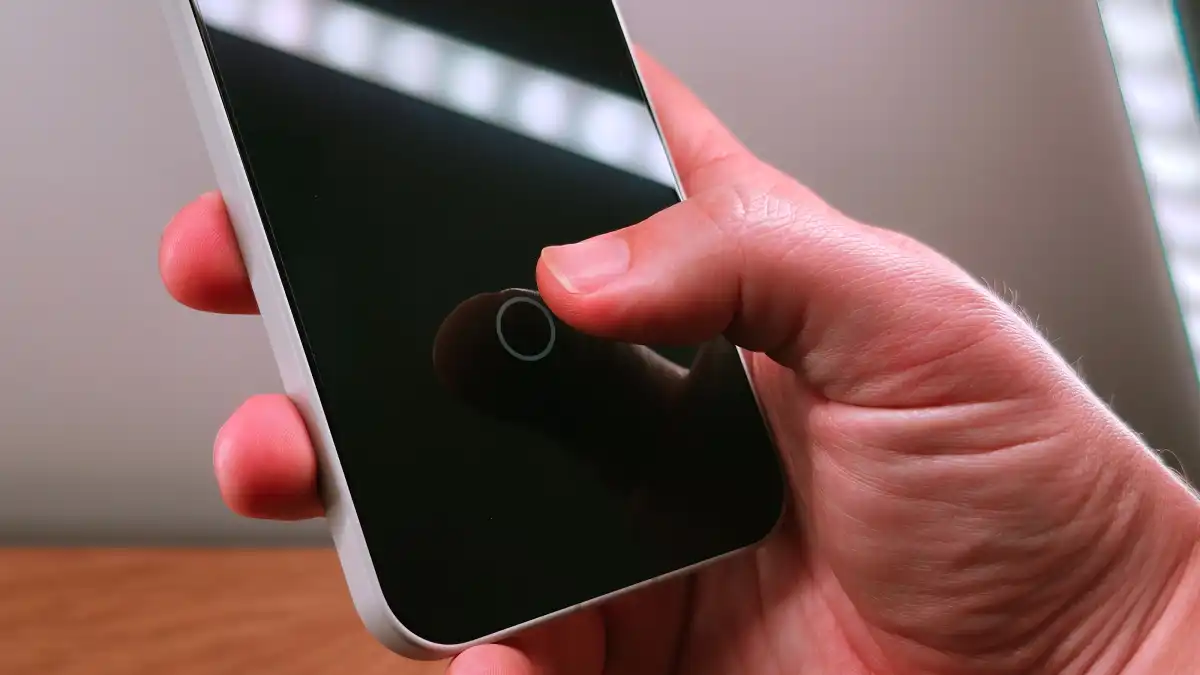
The catch is that, despite the revised speaker grille arrangement, you still get genuine stereo output, with the down-firing speaker producing far more low-frequency output. While less balanced and slightly quieter, I liked the OnePlus 13’s audio performance, which produced a richer, fuller sound with stronger bass response than the OnePlus 15’s flatter, more balanced speakers.
According to rumors, OnePlus has also chosen a smaller, less linear motor inside the OnePlus 15 than its predecessor, but when I compared the haptic performance of both phones (the O Haptics demo in each phone’s Settings menu made comparison easy), I didn’t notice any difference. In either case, expect a high-quality, well-tuned, and rich haptic experience.
Specs & Performance
- Qualcomm Snapdragon 8 Elite Gen 5 chipset
- Up to 16GB RAM & 512GB storage
- Dedicated G2 WiFi chip
Just as the OnePlus 13 was one of the first phones in the world to ship with Qualcomm’s then-new Snapdragon 8 Elite, the OnePlus 15 will most likely be the first phone outside of China to use the chip maker’s most recent top-tier mobile silicon: Snapdragon 8 Elite Gen 5.
Even before I got my hands on the OnePlus 15, we saw how much of a lead the Gen 5 has over the likes of Apple’s latest A19 Pro chipset, but benchmarks show that it still has a significant edge over other flagship chips.
OnePlus 15 benchmarks
Geekbench 6 multi-core results show that the CPU performance is about 20% better than those of phones powered by Snapdragon 8 Elite (like the OnePlus 13), Dimensity 9500 (like the Oppo Find X9 Pro), and A19 Pro (like the iPhone 17 Pro). The business also claims that the CPU is 35% more power efficient.
OnePlus isn’t depending exclusively on Qualcomm’s efforts to make the 15 a powerhouse, however. Beyond existing RAM expansion, which allows you to reallocate storage as more memory inside the phone’s settings, customers who choose for the top-tier 16GB RAM model receive LPDDR5X ‘Ultra+’ RAM.
OnePlus claims it’s the “fastest RAM available in the mobile industry right now,” and with a data transfer speed of around 10,667Mbps, it’s roughly twice as fast as RAM inside last-generation’s Snapdragon 8 Elite-powered phones, which can support RAM at up to 5,600Mbps.
There are a number of other underlying technologies aimed to help extend the OnePlus 15’s performance lead, which were difficult to empirically test but felt worth discussing, if only to demonstrate how far the company has gone in optimising for this generation of flagship.
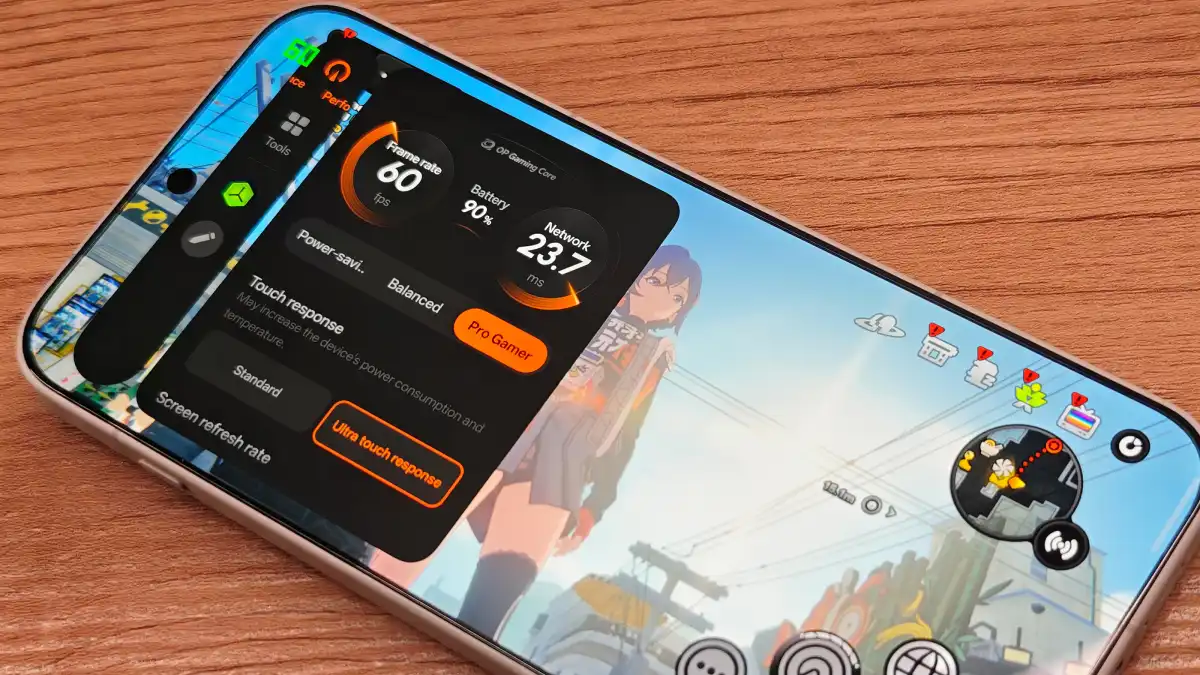
OnePlus’ custom CPU scheduler replaces Android’s default CFS (Completely Fair Scheduler) by prioritising specific processes based on the job at hand. The company says that its method reduces the number of instructions required to be transmitted to the CPU for a particular task by about 23%, resulting in faster processing and less power consumption.
In addition to a quicker display and a dedicated chip to support the phone’s incredible touch reaction rate, OnePlus has included its own G2 Wi-Fi chip, which is designed to increase network performance when dealing with poor connectivity and overall connection reliability.
While the Snapdragon’s Adreno GPU claims 23% greater graphical performance and 20% better power economy, OnePlus’ HyperRendering technology promises an additional 80% more efficient frame creation. Meanwhile, special coding as part of the company’s OP Gaming Core allows the phone to deliver uninterrupted, consistent 120fps gameplay for up to an hour.
With all of these impressive-sounding technologies, claims, and the COD Mobile winning streak all fresh in my mind, I was interested how the OnePlus 15 would handle long-term performance. Unlike Redmagic’s latest products, OnePlus’ newest lacks any form of active cooling solution and has a vapour chamber (VC) that is more than 40% smaller than the one inside the OnePlus 13, so I was concerned.
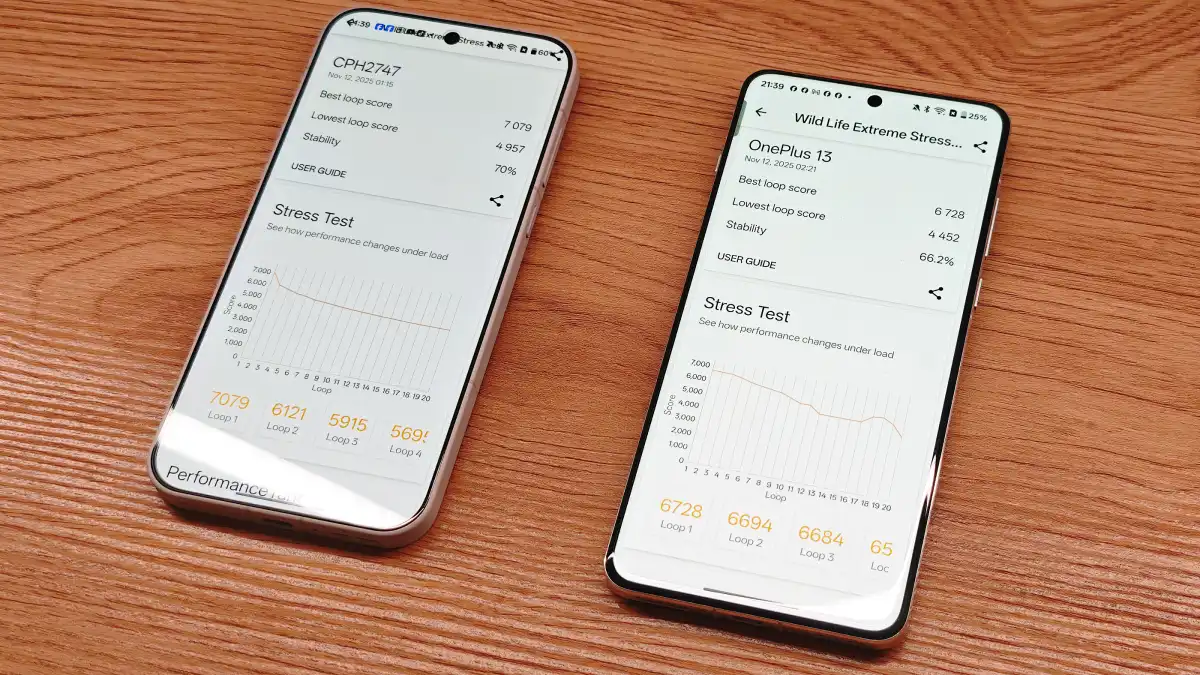
In ‘Balanced’ mode, utilizing 3DMark’s Wild Life Extreme stress test, the OnePlus 15’s performance score declined by almost 30% over the course of 20 consecutive runs.
By comparison, the OnePlus 13’s performance dropped by 34% under the same conditions, indicating that despite its larger vapour chamber, the use of cutting-edge materials inside the 15’s VC – such as white graphite and aerogel – paired with the more efficient chipset and the various technologies under the new OP Gaming Core, still grants it an edge in terms of sustained performance.
Popular titles like Zenless Zone Zero use ‘High’ graphical settings on the 15, while Call of Duty Mobile starts with ‘Very High’ graphics and a maximum frame rate of 165fps.
Cameras
- 50Mp main, ultrawide and 3.5x telephoto sensors
- 32Mp selfie camera
- First OnePlus phone with DetailMax Engine
Concerns about camera performance have been looming over the OnePlus 15’s debut. While, like their vapour chambers, the 15 employs smaller 50Mp sensors than the OnePlus 13 – all with lower apertures – the resulting photographs are just as good, and in some cases better.
You might argue that the OnePlus 13 provided a more honest photographic experience than the majority of the greatest camera phones at the time of its release. In my OnePlus 13 camera review, I attributed this to the company’s Hasselblad relationship, which included more subtle and authentically intended picture processing.
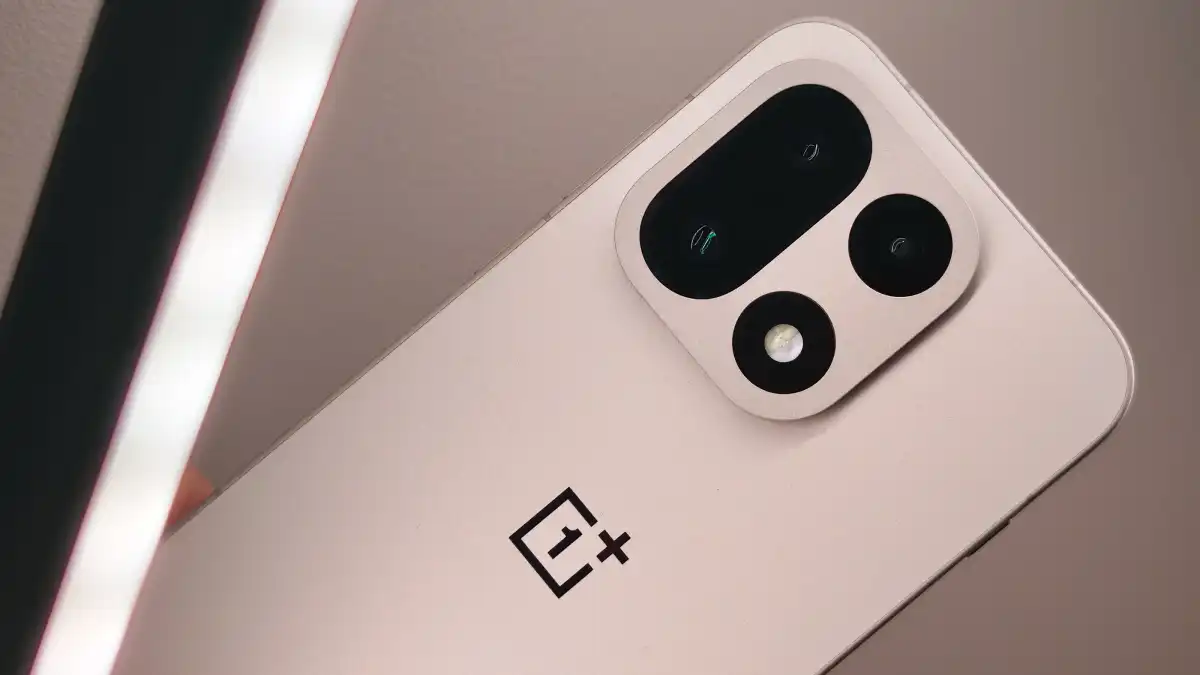
With the OnePlus 15, that cooperation is no gone, and OnePlus has shifted its focus to fully embrace in-house photography technology known together as the DetailMax Engine.
While the differences will often come down to personal preference rather than which provides the best image, I prefer the OnePlus 15’s processing decisions over its predecessor. Photos are more processed on the company’s latest phone, and fine detail may appear softer in low light, but the trade-off includes less noise, more dynamic range, and better color reproduction.
Shots are more colorful than you’d expect from the OnePlus 13, and portrait capture shows improved edge detection and subject separation; nonetheless, the heavier processing results in more obvious lightening in the shadows and milder contrast.
Just as Apple did a few years ago and Oppo did with its current Find X9 series, the OnePlus 15 can now capture higher resolution stills as standard, at 26Mp rather than 12Mp, resulting in greater information in each photo (but larger file sizes).
The Clear Burst function has also been upgraded, increasing from 6 to 10 shots per second between generations while also providing a wider dynamic range than Classic Burst.
The new Custom 32Mp IMX709 selfie shooter not only has autofocus, but it also features a new RGBW (‘W’ for white) sensor array, which provides 60% more light sensitivity than the OnePlus 13. The most tangible gain I discovered here was improved color reproduction, particularly with green tones, which the OnePlus 13’s camera system constantly struggled with.
Despite having a different sensor arrangement, the 15 boasts the same stunning new 4K 120fps Dolby Vision video capture as the Find X9 and Realme GT 8 Pro. Image quality in video capture is typically outstanding, however the dynamic range appears to be a little smaller than in still photography, and image stabilization can occasionally be a little’sticky’, which OnePlus could likely fix with a software update.
While OnePlus isn’t my go-to brand for high-end videography, the trickle of new, more advanced video features, such as LOG recording with LUT-monitoring (which isn’t built in), does help its case in this regard.
Battery Life & Charging
- 7300mAh battery
- 120W wired + 50W wireless charging
- No power adapter in the box
The OnePlus 15’s 7300mAh battery appears almost comical for a nicely sized and weighted flagship. Strides in battery density and silicon carbon (Si-C) technology, however, have resulted in greater capacity appearing in contemporary phones without much increasing bulk.
The OnePlus 13 already had excellent battery life, but the 15 outperforms it, only being surpassed by the Find X9 Pro’s even greater 7500mAh capacity.
The fact that it surpassed 16.5 hours of screen-on time per charge as I lived with it was, frankly, mind-blowing
When you combine such a large battery with the phone’s enhanced performance, cooling, rapid display, and the opportunity to bypass charging, it appears that OnePlus was determined to create the most competitive flagship phone for gaming on the market without actually developing a gaming phone.
As you might expect, in artificial tests, the OnePlus 15’s Work 3.0 battery score of 26 hours and 26 minutes is head and shoulders above almost every other phone on the market (the Find X9 Pro notwithstanding), and while real-world testing reduces that figure, it remains easily the longest-lasting flagship I’ve ever tested.
The fact that it exceeded 16.5 hours of screen-on time per charge while I lived with it was, simply, mind-boggling, and while the Oppo has the potential to last a fraction longer, you have what might potentially function as a three-day phone with careful use. It can run for two days on a single charge, even after downloading enormous files, streaming hours of video, and playing certain high-intensity games.

OnePlus being OnePlus, you also get speedy 120W cable charging, which, providing you have a suitable SuperVOOC charger (which is not included in the package), claims to refill the phone’s massive tank to 100% in just 39 minutes. I never quite reached that amount, but with Smart Rapid Charging activated, despite some apparent warmth, the phone charged completely in 45 minutes (47 with SRC disabled). Unbelievable for such a large capacity battery.
50W AirVOOC wireless charging guarantees a 50% charge in the same time span, and OnePlus isn’t hiding fast charging upgrades behind its own power solutions, with increased PD charging compatibility of up to 36W.
If you’re concerned about degradation, even with faster charging than its predecessor, OnePlus also claims it will retain 80% of its original charge after four years of use, and that the battery has been tested to perform in temperatures as low as -20°C, for further peace of mind.
Software & AI
- OxygenOS 16 atop Android 16 at launch
- New AI features, including AI Relight and AI PlayLab
- 4 years OS + 6 years security update support
According to OnePlus, OxygenOS 16 – which comes pre-installed on the OnePlus 15 – is one of the company’s most significant improvements to the mobile user experience in years.
While everything seems identical from OxygenOS 15, there are a few visual adjustments and layout changes that improve OnePlus’ already refined user experience.
Swiping around reveals new Illuminance Animations (read: fancier UI animations); there are some elements that are clearly inspired by Liquid Glass (such as the lock screen PIN entry), and the experimental new Predictive Back Gesture does a better job of telegraphing where you’ll end up when you swipe back out of a specific screen than standard Android.
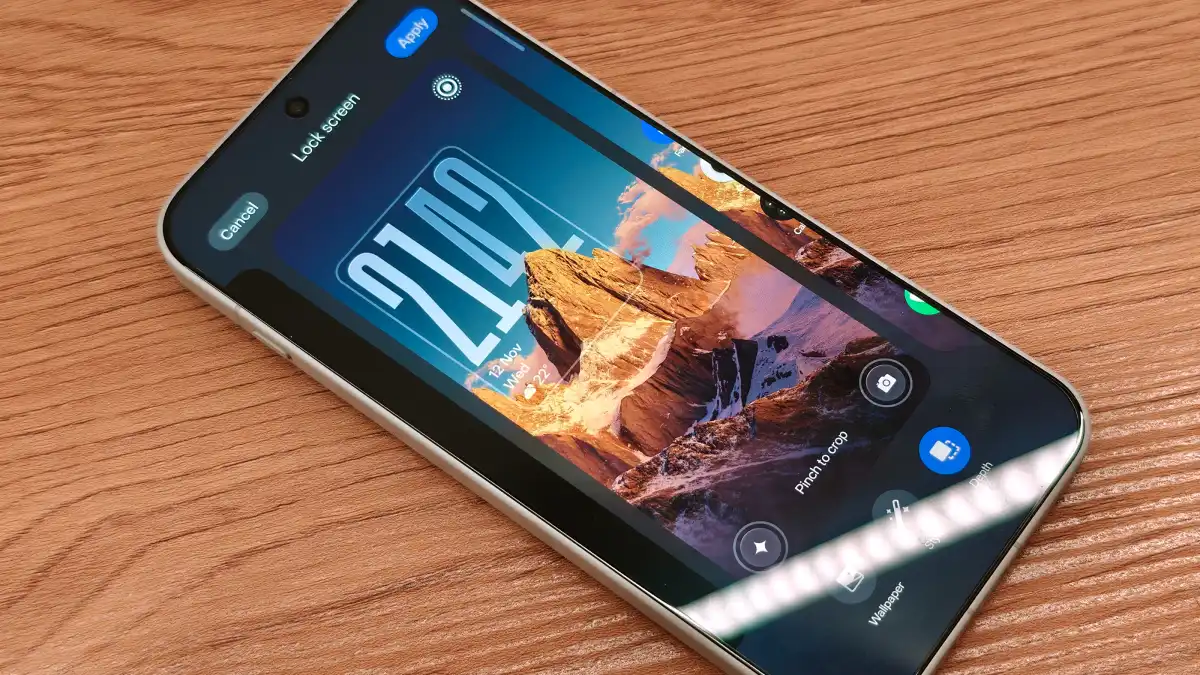
Flux Themes, which were introduced with OxygenOS 15, are back in 2.0 form, with more customization and improved lock screen effects (including motion wallpapers and depth-aware UI elements such as the clock).
The Plus Mind-powered Mind Space, which was introduced earlier in 2025, serves as a storage location for screenshots and voice memos, which OnePlus’ AI processing can then summarise, extract key information from, and even proactively suggest things like calendar entries based on things like an event poster you may have just captured.
The biggest enhancement in OxygenOS 16 is Google Gemini integration, which allows you to ask Google’s assistant to interpret and reference data stored within Mind Space using your voice.
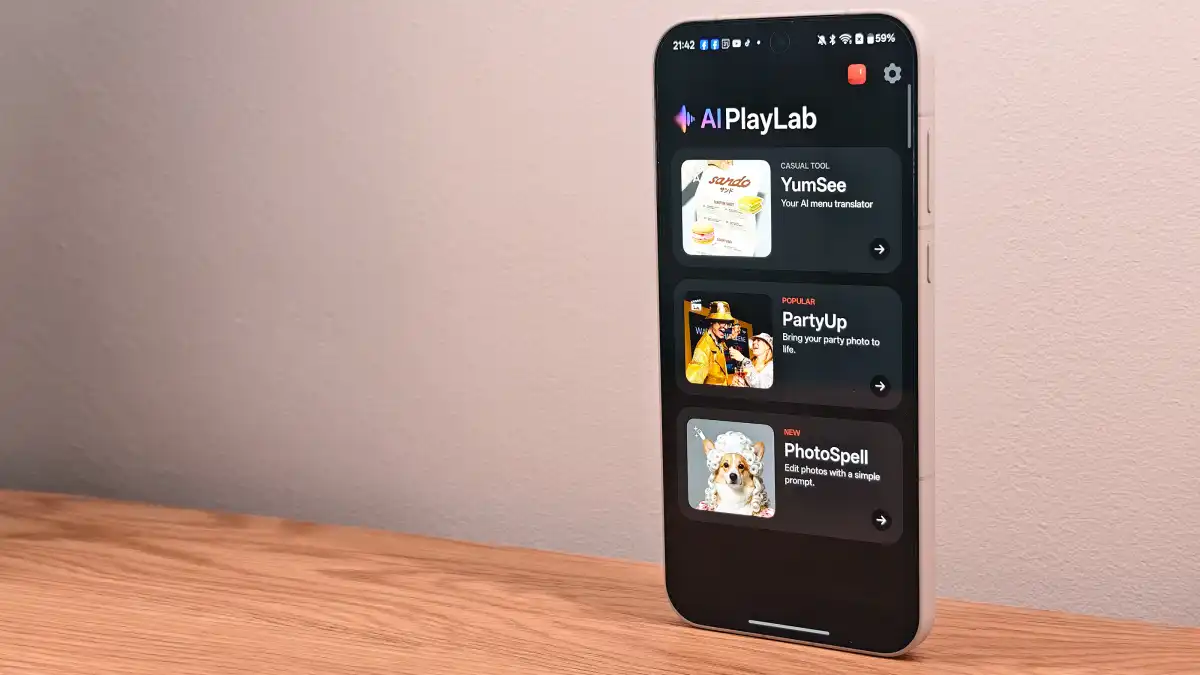
It’s a welcome addition to OnePlus’ AI feature set, and while I’m waiting for a way to easily transfer content saved within Mind Space to other OnePlus devices before fully embracing the feature, it has the potential to be a huge help when it comes to planning and productivity.
I already believe OnePlus’ approach to AI-powered mobile tools is one of the most thoughtful and genuinely helpful out today. Tools appear dynamically based on what you’re doing on-screen, and the emphasis on assistive features only grows.
In addition to summarizing notes and rewording copy, AI Writer can also construct charts and mind maps from supplied data. The AI Scan app can detect presentation slides using the camera (even when seen from an angle) and organize them in a PDF, whereas AI PlayLab is a new dedicated app that allows users to test some of the company’s most experimental AI features.

Similar to the Pixel 10 Pro series (at least in the United States), PlayLab’s PhotoSpell excelled at converting my semantic instructions into edits on a selected image, while YumSee adds Google Lens-like translation and currency conversion for foreign language restaurant menus (truly useful, especially if you travel frequently).
PartyUp is the most unusual of PlayLab’s features, since it allows you to generate live photos and films from still images, animating people in the frame to cheer or wave.
The already remarkable AI toolbox within OxygenOS’ native Photos app also includes a feature dubbed AI Portrait Glow, which adds customizable virtual lighting to portrait images, allowing you to recreate an image with varied degrees of reality while testing.
Price & Availability
The OnePlus 15 skips the traditional pre-order phase and is available for purchase immediately in the UK and across Europe starting 13 November.
The phone is also expected to launch in the United States, and it has already passed FCC certification, but political factors have delayed the announcement of an official release date. However, pricing details are already confirmed.
For global markets outside China, the OnePlus 15 comes in two configurations:
12GB RAM + 256GB storage
16GB RAM + 512GB storage (this model also features faster memory)
The base model is priced at £849 / €949 / $899.99, while the top-tier version costs £979 / €1099 / $999.99 — making it slightly cheaper than the previous generation in the UK.


